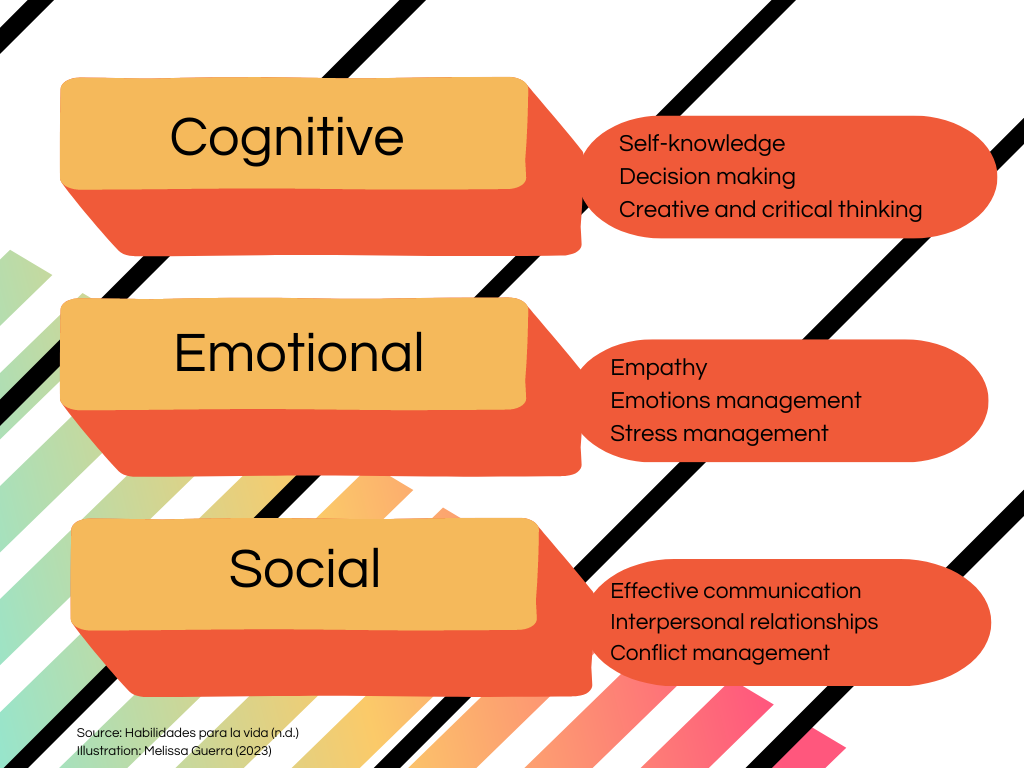Greta Gerwig’s latest film, Barbie®, has elevated several discussion topics, such as feminism, body image, gender stereotypes, empowerment, perfectionism, and the meaning of life and death. However, the doll has always stood out, at least due to the marketing of its iconic slogan: “Be whatever you want to be.” Yet, is it possible to be whatever we want to be?
The Pink World
Doctor, fashionista, singer, mermaid, scientist, panda caretaker, firefighter, dentist, astronaut, and supreme court justice are some of the many professions the famous doll has portrayed. Barbie was created to inspire millions of girls worldwide so women could dream of being whatever they wanted, without limits. However, the reality is different, and opportunities are often few or nonexistent.
Beyond gender, this iconic slogan alone cannot change reality if the right conditions do not exist for economic equality and opportunity, social mobility, and attitude, among many other circumstances.
The Real World and the “Rosa Pastel” effect
Millennials, the current and near-future workforce
The lack of opportunities, insufficient wages, company nepotism, and the considerable investment in education are a few of the shocks that frustrate the millennial generation when they enter the work world.
An example of this scenario is the “Rosa Pastel” of Belanova’s song, which recently trended on the TikTok platform, reflecting the sad reality and crisis of professionals: “Everything is over, there is no more, we will be two strangers,” a verse that refers to a dream of young people that, instead of becoming a reality, materialized into something else; the song’s trending exposes frustration, sadness, failure, and the disappointment of not being able to practice their professions.
So, although Millennials are the first digitally native generation and the next to lead the world’s workforce, the crises and the complex imbrications of the new work environments demand more and more from professionals.
According to IMCO, although unemployment decreased by 0.7 percent compared to 2021 in Mexico, this does not mean that there is employment opportunity for everyone because “the conditions of the social security system and the null safety net against unemployment in the country mean that the majority of the Mexican population cannot remain without a source of income for long, so they are continuously looking for a job and accept employment in any activity, even informal work, or with a reduced number of hours or income.”
The Realities of Latin America
If you want to “be whatever you want,” you need a profession (whether dreamed or not), that is, to dedicate yourself to something to survive. LATAM’s labor and economic conditions reflect a complex world of variables that indicate governments’ need for reforms, public policies, and investment to offer more and better employment opportunities, consequently producing a better quality of life.
The National Council for the Evaluation of Social Development Policy’s most recent 2023 report on the Measurement of Poverty in Mexico highlights that, between 2018 and 2022, the number of people in extreme poverty rose from 8.7 to 9.1 million. However, the same report indicated a recovery of 13% (57.4 million people) in the employed population, where 38.4% are in the formal workforce and 60.9% in the informal.
Generally, in LATAM, poverty increased from 24% to 26.5% during the pandemic, although projections call for inflation to decline by 5% by 2023 (except in Argentina).
In other respects, according to the OECD, in Mexico, the household net disposable income is lower than the OECD (Organization for Economic Co-operation and Development) average of USD 16,269, compared with the standard of USD 30,490 a year. Also, the conflict between Russia and Ukraine has caused an increase in inflation, so real wages have fallen (3.8%) in almost all OECD countries. Meanwhile, northern neighbors experienced a slight decline in hourly wages: less than 0.7% for the US and 2% for Canada (January 2022 to March 2023).
The OECD points out in its Better Life Initiative report that, in terms of work and job quality, Mexico has a favorable employment rate, but it is not optimal; the gender wage gap has a notable and alarming inequality in comparison to other indices.
Regarding the gender gap in Latin America, Mexico attained a score of 76.5 (the higher the score between 0 and 100, the more significant the progress), ranking 33rd out of 146 countries falling two positions globally. In contrast, among the countries of Latin America and the Caribbean, it occupied the sixth position. Nicaragua, Costa Rica, Jamaica, and Chile have the best gender gap ratings in Latin America.
A concerning fact about Mexico’s gender gap is that, if this trend continues to be constant, it will take Mexico five generations to close the gap to the worldwide level, i.e., almost 131 years.
In the report section “Resources of Mexico for its Future Wellbeing” (in the Human Capital tab), the OECD mentions that the “educational achievement of the adult population in Mexico” index is below the OECD average, although it indicates continuous improvement. Note that when we talk about human capital, it refers to “the economic or production value derived from the training and experience of workers.”
As if the above were not bad enough, only 24% of young people enroll in universities in Mexico, while higher education enrollment in other Latin American countries is 86%. It is important to note that the pandemic, according to the OECD, has caused a lag of two years in Mexico compared to the other countries in this organization.
The brain drain
Due to the lack of professional development and opportunities, the “brain drain” phenomenon has recently increased in Mexico and LATAM.
According to CONAHCYT (formerly CONACYT), in its report “The Highly Qualified Mexican Migration in the Face of Twenty-first-Century: Problems and Challenges,” Mexico is the leading country of highly qualified migrants in Latin America and the sixth worldwide. In addition, it is also the second-place country of skilled migration directed to the first-place capitalist power in the world: the United States.
The report indicates that people migrate to other countries to improve their labor conditions and the quality of life not available or readily accessible in their countries of origin. In the case of Mexico, this means many brilliant minds that could make a significant difference in the country’s development are migrating.
Is it better to work for dreams or goals?
“Dreaming costs nothing.” Indeed, dreaming is the first step to achieving any venture, goal, or objective. This part is the infatuation with what is desired, i.e., thinking about what could be and how it would be, imagining fantastic scenarios. While the dream is exciting and involves imagination, longing, and desires (the dreamed future), the work is to reach the goal.
The dream is only the beginning; one must take action for it to materialize. In addition, before the dream becomes real, disappointments and frustration may come, for example, not finding the desired scholarship or not being chosen, not seeing the necessary resources, and needing more time to carry out particular processes, among others.
Although goals and dreams differ, both are symbiotic, where one depends on the other; one cannot set aside that making dreams happen requires concrete actions.
Therefore, it is necessary to take action with a clear mind and draw up an action plan (or several), considering that if plan A does not work, there is a plan B, but always oriented toward what you want to achieve. However, it is also essential to be aware that, due to various factors, some goals cannot be achieved or will have to be achieved differently than planned.
Can I be whatever I want? What does this imply?
Many factors come into play when wanting to realize a dream. Some of them are the following:
- Know who you are: You cannot think about “whatever you want to be” without knowing who you are, so self-reflection is necessary to know in depth who you are as a person, as well as your strengths, weaknesses, and abilities, among others.
- Motivation is an essential ingredient driving the human being’s determination or will to achieve something. It can be intrinsic or extrinsic; although both are important, it is necessary to have inherent motivation because external motivators can be readily exhausted or lost.
- Perseverance is a positive value that allows us to push ourselves despite obstacles to achieve a goal or success.
- Failure as a part of the process: Fear of failure is widespread, but making mistakes, being wrong, and failing is part of the process. You often learn more from failure than success as you analyze the causes, consequences, and areas of opportunity and strengths.
- Take action: Although dreaming of “whatever I want to be” is possible, the dream’s materialization will involve work and economic, emotional, and social sacrifices. Therefore, drawing up an action plan to realize goals is necessary.
It is crucial to mention that materializing a dream does not depend only on these factors; it is also essential to have common sense without falling into pessimism or toxic positivism. On the other hand, imposter syndrome can be present in these cases because people tend to underestimate their skills, abilities, and worth.
Unfortunately, some dreams cannot be fulfilled due to various variables, and that is a reality that must also be considered when drawing up an action plan. However, if the goal is feasible, the key is to have consistency, know yourself (strengths and areas for improvement), and have the mental strength to face the coming adversities.
How do we develop a growth mindset from childhood?
Nowadays, with new developments in teaching methods, neuroeducation, positive psychology, and emotional education, it is much easier for the new generations to have a much more comprehensive education, which consequently leads to a better-prepared professional with the necessary digital and emotional tools that allow functioning in the best way as a person and professional.
However, this type of education is not accessible to all; for example, many indigenous and rural communities do not have internet access or insufficient infrastructure for them to prepare. At this point, it is important to mention social mobility, which has made progress, but more work is needed so that thousands of people can have access to education, allowing them to have the opportunity for better jobs.
The power of words
The emotional part of the individual must receive attention starting from childhood. Many people with frustrated dreams belong to the generations that, in childhood, had a model of overprotective parenting, which avoided disappointment and frustration at all costs, where rewards were continuously given without valuing the effort, resulting in weak self-esteem.
Therefore, parenting models and child emotional development are fundamental since they will decide how the individual grows and develops in society.
So, to form a growth mentality from childhood, there must be adequate parenting models in the home that positively balance the family, considering the importance of socio-emotional development in childhood. Also, the school must implement or complement programs for emotional education in children to build the scaffolding of their mental structure for healthy growth, leading to an emotionally happy adult with emotional health and values who is aware of what they want to be and can become.
Competencies for life
Namely, there are many types and definitions of competencies according to the frame of reference. We can find basic skills, generic (transversal, systemic, instrumental, interpersonal), specific (professional/work), or other types (communicative, business, linguistic, etc.).
Consequently (although there are many frameworks to talk about competencies), one must mention life skills established by the World Health Organization (WHO), which are “the ability of a person to face the demands and challenges of daily life successfully;” these fall into three categories:

It isn’t easy to bundle everything under a simple phrase (You Can Be Anything). What is a reality is that some dreams or desires can go unfulfilled. However, this does not mean that you should stop dreaming or begin believing that whatever you want to do is impossible, much less stop aspiring, since, under certain circumstances, including work, perseverance, and motivation can make those life projects a reality.
Translation by Daniel Wetta
This article from Observatory of the Institute for the Future of Education may be shared under the terms of the license CC BY-NC-SA 4.0 
)
)


)